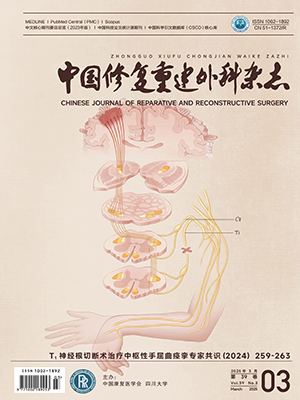Objective To investigate the stability and the stress distributions of L3-5 fused with three different approaches (interbody, posterolateral and circumferential fusions) and to investigate degeneration of thesegment adjacent to the fused functional spinal unit. Methods A detailed L3-5 three-dimensional nonlinear finite element model of a normal man aged 32 was established and validated. Based on the model, the destabilized model, the interbody, posterolateral and circumferential fusions models of L4-5 were established. After the loadings were placed on all the models, we recorded the angular motions of the fused segment and the Von Mises stress of the adjacent intervertebral disc. Results The circumferential fusion was most stable than the others, and the interbody fusion was more stable than the posterolateral fusion. The maximal Von Mises stress of the adjacent L3,4 intervertebral disc in all the models was ranked descendingly as flexion,lateral bending,torsion and extension. For the three kinds of fusions, the stress increment of the L3,4 intervertebral disc was ranked ascendingly as interbody fusion,posterolateral fusion and circumferential fusion. Conclusion After destabilization of the L4,5 segment, the stability of the circumferential fusionis better than that of the others, particularly under the flexional or extensional loading. The stability of the interbody fusion is better than that of the posterolateral fusion, except for under the flexional loading. The feasibility of adjacent segment degeneration can be ranked descendingly as: circumferential fusion,posterolateral fusion and interbody fusion.
Citation: ZHANG Desheng,SONG Yueming.. THE FINITE ELEMENT ANALYSIS OF LUMBAR FUSIONS. Chinese Journal of Reparative and Reconstructive Surgery, 2006, 20(4): 400-403. doi: Copy
Copyright © the editorial department of Chinese Journal of Reparative and Reconstructive Surgery of West China Medical Publisher. All rights reserved




